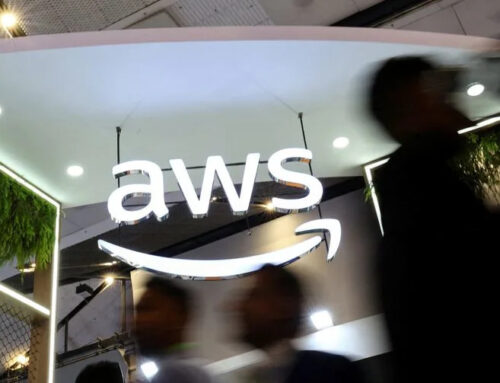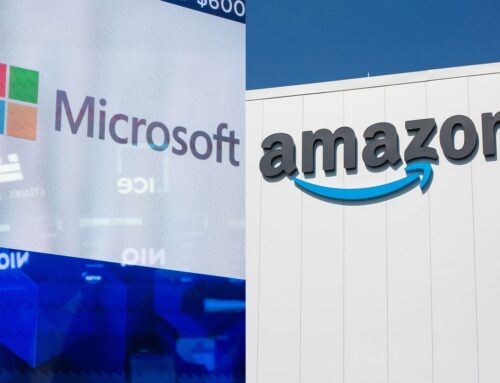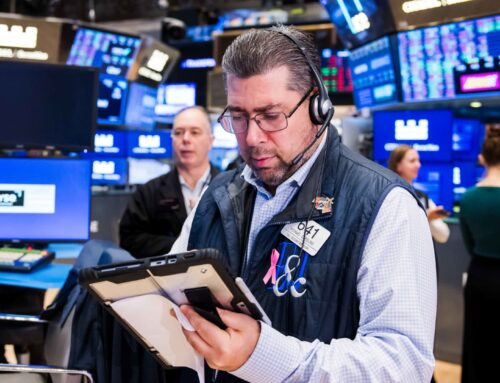Big Tech’s earnings will focus on AI and iPhones
October 28, 2025
Big Tech’s earnings season continues in earnest after the bell on Wednesday with Google (GOOG, GOOGL), Meta (META), and Microsoft (MSFT) set to announce their results, followed by Amazon (AMZN) and Apple (AAPL) on Thursday.
It’s a murderers’ row of announcements that are sure to influence the market’s direction in the days ahead. We’ll still, however, have to wait until next month to hear from AMD (AMD) and Nvidia (NVDA), which report on Nov. 4 and Nov. 19, respectively.
Read more: Live coverage of corporate earnings
Top of mind will be whether and how much Amazon, Google, Meta, and Microsoft’s continued investments in AI are paying off, and how much more they’re willing to keep putting up to build out their data centers.
For Apple, the big question will be how the iPhone 17 line performed in its first few weeks of availability versus the iPhone 16. That helped push the company’s market capitalization to the $4 trillion mark on Tuesday. That makes Apple the third company to cross this threshold after Nvidia and Microsoft, which has since fallen back below $4 trillion.
It all adds up to one of the biggest tests of the year for the tech industry, among the most important weeks for tech investors and analysts alike.
AI and its impact on cloud spending will drive much of the conversation for the likes of Amazon, Google, and Microsoft as Wall Street looks for signs of continued AI-powered growth across their respective services.
In a note to investors, Karl Keirstead of UBS noted that the investment bank’s discussions with Amazon, Google, and Microsoft cloud customers and partners were more upbeat going into this quarter than prior reports.
Year to date, Amazon’s stock price is trailing both Google and Microsoft, climbing just 0.03% versus Google’s 33.2% and Microsoft’s 24.2%. For the quarter, Keirstead wrote that both Google and Microsoft will post cloud growth of 32% and 39%, respectively, versus 17% growth for AWS.
The problem, he said, comes down to Microsoft’s exposure to OpenAI’s (OPAI.PVT) insatiable demand for data center capacity and Google’s jump in Gemini usage. Amazon serves as the cloud provider for Anthropic (ANTH.PVT), though the AI company signed a deal with Google last week that will see it use up to 1 million Google chips to power its AI software.
“The key source of investor angst about AWS growth is around its exposure to AI, and not necessarily that it is losing material share to Microsoft for core or CPU-based workloads,” Keirstead wrote.
“In order for AWS sentiment to improve on the upcoming 3Q25 results, investors will need to come away feeling more confident in … AWS’s exposure to AI compute workloads,” he added.
Take out Microsoft’s OpenAI strength, however, and cloud growth is estimated to be just 22% compared to 15% for AWS.
“Given the much greater scale of AWS for core or ex-AI revenue, this gap is more modest and explainable,” Keirstead wrote.
Amazon is also fresh off last week’s massive AWS outage that took down large swaths of the internet around the world. Investors didn’t seem to mind much: Shares rose more than 2% the day AWS went offline.
AWS also has an ace up its sleeve in the form of the company’s massive Project Rainier, which it said will connect hundreds of thousands of its Trainium2 chips across the US. Anthropic will use the supercluster to both build and deploy new versions of its Claude AI model, helping to boost the company’s AI exposure and growth potential.
Google Cloud Platform will also be in the spotlight this quarter as Wall Street looks for continued growth in the segment through more cloud contracts and increased AI usage. During the company’s second quarter earnings call, CEO Sundar Pichai called out Google Cloud Platform’s $50 billion annual revenue run rate and added that it is seeing significant demand for its AI portfolio.
According to BofA Global Research’s Justin Post, Google is getting a boost from the shift to generative AI results from standard search.
“Our ad checks suggest that this shift may be benefiting Google [and] other major platforms, as advertisers are increasingly shifting toward paid advertising to offset any declines in organic traffic,” he wrote in a note to investors.
Google, however, is also facing fresh competition in the browser space. OpenAI debuted its new ChatGPT Atlas browser last week, which could pose a major challenge to Google’s popular Chrome browser if it gains traction among consumers and enterprise users. Still, with a market share of 72%, it will take quite some time to erode Chrome’s lead.
Microsoft’s cloud business has been on a tear, thanks to the intense demand from OpenAI. That, according to Keirstead, could set up the company for a strong quarter.
“The tone from enterprise customers and partners has improved again, with large Azure partners citing accelerating growth trends,” he wrote in a note. “On the AI/GPU front, demand trends from OpenAI in particular appear to be strong.”
Microsoft’s report also comes after the company and OpenAI came to terms regarding the future of OpenAI’s for-profit public benefit corporation. The agreement means Microsoft will lose its first right of refusal to serve as OpenAI’s cloud provider, though OpenAI has committed to spend $250 billion on Microsoft’s Azure.
Microsoft will also need to show that Azure isn’t just growing due to AI usage and that its standard cloud offerings are continuing to provide material improvements to overall cloud revenue.
Then there’s Meta, which doesn’t sell cloud or AI capabilities, but instead uses AI to power its advertising business. Meta — like Amazon, Google, and Microsoft — is also pouring billions into building out AI data centers and has, so far, shown that it’s paying off.
But Meta also needs to ensure that its ad and engagement numbers keep pace with its elevated level of capital expenditures.
It doesn’t help that Meta will report its earnings the same day as advertising rival Google, setting up a quick comparison point between the two. If Meta outperforms Google, the company’s stock could jump. Likewise, a miss could send it lower.
Meta also debuted its latest AI hardware during the quarter, including a new pair of smart glasses with a built-in display that could drive consumer engagement — not to mention advertiser interest — in the future.
Apple isn’t in the AI game like the rest of its cohort. Sure, it has Apple Intelligence and is expected to launch its AI-enhanced Siri in the coming months, but the company is still all about selling iPhones.
Earlier this month, Counterpoint Research issued a report stating that Apple’s iPhone 17 lineup outsold the iPhone 16 in both the US and China by 14% during its first 10 days on the market. That helped push Apple’s stock price higher, driving its market cap to the $4 trillion mark on Tuesday.
But Jefferies analyst Edison Lee wrote in an Oct. 19 investor note that sales momentum is cooling in many of the markets Jefferies tracks, with lead times, or the amount of time it takes for an iPhone to ship after a person orders it, dropping versus the prior week.
Wall Street will be especially keen to learn about consumer interest in Apple’s new iPhone Air and whether it’s outselling the iPhone Plus it replaced.
Email Daniel Howley at dhowley@yahoofinance.com. Follow him on Twitter at @DanielHowley.
Click here for the latest technology news that will impact the stock market
Read the latest financial and business news from Yahoo Finance
Terms and Privacy Policy
Search
RECENT PRESS RELEASES
Related Post





